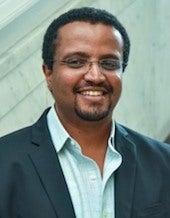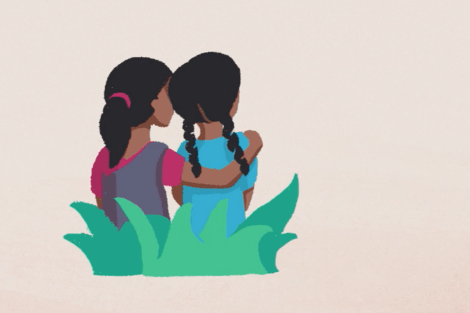November 20, 2020 – A new series of four short animated films is aimed at helping children who have lived through forced labor, trafficking, and other forms of exploitation to take positive steps toward the future.
The series, called “A Brighter Future,” was produced by Medical Aid Films in collaboration with Harvard T.H. Chan School of Public Health and the Kailash Satyarthi Children’s Foundation (KSCF). The films, released on World Children’s Day, November 20, are available for free to all, in English, Hindi, and Bengali, and will later be translated into other languages.
Watch a video message from Harvard Chan School Dean Michelle Williams about “A Brighter Future”

“Children who have been exploited often blame themselves for having been rescued,” said Bizu Gelaye, assistant professor in the Department of Epidemiology, whose research focuses on understanding neuropsychiatric disorders and who led Harvard Chan School’s involvement in developing the film scripts. “These films offer practical messages aimed at normalizing some of the symptoms children may be dealing with, emphasize that they’ve been rescued from terrible experiences, and try to reassure them that they’ve done nothing wrong. The films send the message that they are unique, that they’re no one’s property, that they have fundamental human rights, and that they’re free to learn and prosper.”
The International Labor Organization estimates that there are 152 million child laborers around the globe, with 73 million engaged in hazardous work. More than 20 million are subjected to the worst forms of child labor—including slavery-like practices such as forced and bonded labor, child soldiering, and sexual exploitation—or are used by adults in illicit activities such as drug trafficking, according to UNICEF.
The films, each about four minutes long, focus on fictional former child laborers, Ajay and Priya. They feature messages around overcoming past trauma, rediscovering childhood, learning to play with others, self-care, equality, and the importance of education as a tool in breaking cycles of exploitation.
One of the films depicts Ajay’s rescue from working in a gravel quarry, and his arrival at a children’s center in India with other rescued children. Although initially cautious at the center, Ajay eventually becomes more trusting. “My life started to improve from that moment on,” says Ajay in the film. “I started to understand that I could have a happier future, and that I deserved it.”
Another film focuses on Priya, a teenager who is rescued from working as a maid in an abusive household. The film describes mental and physical symptoms that Priya and children like her may experience following traumatic events—such as difficulty sleeping, feeling angry or nervous, or having stomach problems—and offers strategies for managing them.
Harvard Chan School’s involvement in creating the films grew out of conversations last year between experts from the School, including Dean Michelle Williams, Gelaye, and others, and Nobel Laureate Kailash Satyarthi, who has rescued more than 87,000 children from forced labor and exploitation. Satyarthi spoke at Harvard’s Sanders Theatre last September at a screening of clips from a documentary about his work, “The Price of Free.” Williams introduced the event, which was cosponsored by Harvard Chan School. “We talked about adding value to the amazing work that Mr. Satyarthi and his foundation are doing in rescuing children,” Gelaye said.
Other collaborators on the films included psychiatrists with expertise in trauma from Harvard Medical School, Massachusetts General Hospital, and McLean Hospital, as well as experts from Harvard Chan School’s India Research Center (IRC). Ananya Awasthi, assistant director of the IRC, said that the center helped with translating the film scripts into Indian languages; is working with KSCF’s India team to help train caregivers who work at the foundation’s rehabilitation centers for children; and will help disseminate the films to various stakeholders in India.
The team considers the films a first step, said Gelaye. Longer term, the goal is to conduct a multi-country study to quantify the burden and impact of child exploitation. “The ultimate goal is policy change based on generating evidence,” said Gelaye. “If we can show the adverse health outcomes that manifest themselves later in life due to child exploitation, it could compel countries to take action.”
